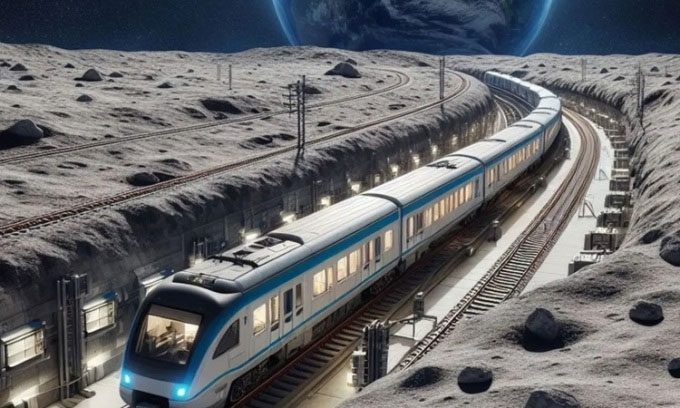The Moon Rail Network could transport people, essential goods, and resources to support commercial activities and contribute to the space economy.

Simulation of the railway system on the Moon. (Image: DALL-E3).
The U.S. Defense Advanced Research Projects Agency (DARPA) has selected Northrop Grumman, a defense technology and aerospace company, to develop the concept of building a railway on the Moon. This initiative is part of the larger Lunar Architecture 10-Year Study (LunA-10) announced by DARPA last year, involving 14 other companies, as reported by Interesting Engineering on March 20.
More than 50 years after the final Apollo mission, the U.S. aims to return astronauts to the Moon. However, the Artemis program is not only focused on landing on the Moon but also on establishing a human settlement and a journey further to Mars. While NASA concentrates on preparing for human landings on the Moon, DARPA is considering subsequent activities.
With the LunA-10 project, DARPA hopes to identify solutions for creating multifunctional systems on the Moon. For example, unlike a power plant on Earth which performs a single function, a lunar power station could also serve as a positioning and communication center while wirelessly transmitting electricity. Last December, DARPA announced the 14 companies participating in the project, including major names like SpaceX and Blue Origin.
Northrop Grumman is the first company to reveal its role in the project and will develop the lunar railway concept. Similar to the establishment of railways in the 19th century that boosted economic activity in the western United States, this new technology is expected to activate and sustain economic development on the lunar surface. According to the company, the Moon Rail Network could transport people, essential goods, and resources for commercial projects, contributing to the space economy for the U.S. and international partners.
Currently, Northrop Grumman is responsible for a limited part of the plan, such as identifying resources for building the railway network. This will help identify technical and logistical risks in the project and estimate costs. The contractor will also develop prototypes, analyze designs, and establish architectural requirements if the project moves into full operation in the future. In the next phase, the company will explore ideas for constructing, installing tracks, aligning, and operating the system, while also applying robotics for maintenance and repair.




















































